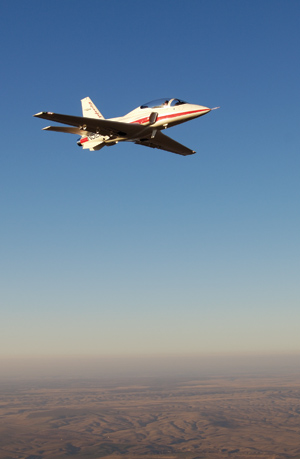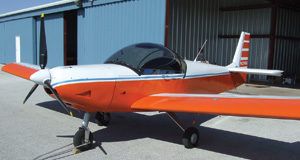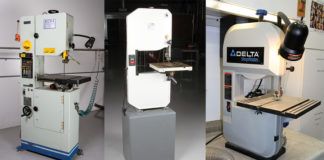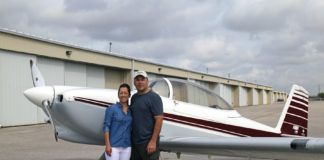This month, we’ll scrutinize the factors that determine the climb performance of an airplane. There are two significant aspects to climb performance. The first is rate of climb, which is the altitude gained per unit of time. Rate of climb is usually measured in feet per minute. The second is the angle of climb, which is the angle between the flight path of the airplane and the horizon. The greater the angle of climb, the more altitude the airplane gains for each foot of forward motion.

Climb performance is affected in part by the aircraft’s power-to-weight ratio. The ViperJet is heavy, but the Pratt & Whitney powerplant provides a lot of power, so the climb rate is impressive.
The best angle of climb typically occurs at a lower airspeed than the best rate of climb. During a best-angle climb the airplane flies up a steeper flight path, but it flies slower. This causes the rate of climb to be lower even though the angle is higher. Lowering the nose and allowing the airplane to fly faster makes the flight path shallower, but because the airplane is moving faster along that path, the rate of climb is increased.
For normal up-and-away operations, a best-rate climb is usually considered optimum. For obstacle clearance, however, the goal is to get as high as possible while covering the minimum distance over the ground, which requires best angle of climb rather than best rate of climb. The maximum angle at which the airplane can climb is affected by several factors, with the most important of these being power-to-weight ratio, wing loading and the lift-to-drag ratio at the particular climb airspeed.
Power-to-Weight Ratio
Power available for the climb has a strong effect on the climb angle. Increasing power increases the angle of climb greatly, and reducing it reduces angle of climb substantially. This effect is amplified because climb performance is determined by the excess power rather than the total power.
Excess power is the total power available minus the power required to maintain level flight. For example, if an airplane has an engine-prop combination that can generate 100 thrust horsepower (shaft horsepower times propeller efficiency) and requires 75 hp to maintain level flight, it has an excess of 25 hp. Increasing the power from 100 hp to 125 hp increases the total power by only 25%, but it increases the excess power from 25 hp to 50 hp, which is a 100% improvement.
Thus, a change of only 25% in total power in our example would roughly double the climb performance. (Note that actual percentages vary with weight, power and aerodynamic characteristics of each airplane.) The important point is that changing the total power changes excess power much more rapidly than it changes total power, so the effect on climb rate will be proportionately greater than the increase in total power.
The weight of the airplane is also a vital factor in determining climb performance. The climb performance of the airplane is proportional to the "specific excess power," which is the excess power available per pound of airplane weight. For a given excess horsepower, the lighter the airplane is, the better it will climb.
For example, an airplane that weighs 1000 pounds and has an excess of 20 hp climbs at the same rate as an airplane that weighs 2000 pounds and has 40 excess hp. It is the power-to-weight ratio of the airplane rather than the total installed power that affects climb performance.
Wing Loading
The airplane’s angle of climb is determined by the ratio of the rate of climb to the horizontal speed. For a given rate of climb, the climb angle is steeper if the airplane is flying slowly than if it is flying faster. Decreasing the wing loading of an airplane decreases its stall speed and will also decrease the airspeed at which the airplane climbs best, tending to make the climb steeper. Conversely, increasing the wing loading will increase the airspeed at which the airplane climbs and will tend to make the climb angle shallower. If two airplanes have the same power, the same weight and the same excess power in the climb, the airplane with the lower wing loading will climb more steeply than the one with higher wing loading. This effect is dramatically illustrated by watching the climb performance of modern ultralights, machines that have very low wing loading. Their rates of climb are not high, but because they are flying so slowly when they climb, the angles of climb they achieve can be most impressive.
Drag Effects
When an airplane is climbing, part of the power being delivered by the engine is being used to overcome the drag of the airplane, and the remainder is being used to increase altitude. Obviously, if the drag is reduced, less power will be needed to fight drag, and more power will be available to make the airplane climb.
Several things affect an airplane’s drag, but one of the most important in the context of climb performance is span loading. When a piston-engine airplane is climbing at best rate of climb, about three-quarters of its drag is induced drag, which is determined primarily by the span loading: the airplane’s weight per foot of wingspan.
At a given weight and airspeed induced drag is proportional to the span loading squared. Cutting the span loading in half reduces the induced drag by 75%, while doubling the span loading quadruples it. Thus, increasing the wingspan is one of the best aerodynamic modifications to improve climb performance.
Once again, we can look to ultralights for an illustration. While most ultralights have relatively high parasite drag, they have wingspans large for their weight. A typical ultralight carries 500 to 600 pounds of airplane on a wing with a span similar to that of a 1600-pound, two-seat trainer. The span loading of the ultralight is only 38% of the span loading of the trainer. This low span loading allows the ultralight to climb well on low power.
The effect of airplane drag on climb performance is also important when we consider the effect of using flaps during the takeoff. Deflecting the flaps decreases the stall speed of the airplane and can therefore decrease the takeoff ground roll by decreasing the liftoff speed. After the airplane has left the ground with flaps deflected, the situation changes. The deflection of the flaps increases the parasite drag of the airplane, particularly if flap deflections are large. Also, the plane is flying slower when it lifts off.
Induced drag of an airplane is inversely proportional to the airspeed squared, which means that the slower the airplane flies, the higher its induced drag. This sounds backwards, but it is true. Parasite drag, on the other hand, increases with increasing airspeed. It is this difference in the behavior of the two components of drag that makes induced drag so important during climb, and that makes parasite drag the dominant factor at high speed. If the airplane is dragged off the ground at low speed, depending on the flap lift to avoid stalling, its induced drag will be high. The situation will be worsened by the altered spanwise lift distribution of the wing (unless flaps are the full-span type), decreasing its span efficiency and increasing the induced drag still more.
Flap parasite drag and high induced drag due to low airspeed will usually more than overcome the advantage gained by flying slower and lifting off sooner. Although takeoff ground roll is reduced, using flaps will usually decrease climb angle, and the overall obstacle-clearance distance will be increased. This is particularly true of airplanes with relatively low power-to-weight ratios, which have low excess power under the best of circumstances. Any pilot who has performed a flaps-deflected, soft-field takeoff in a standard production trainer has experienced the airplane’s extreme reluctance to climb until it has accelerated in ground effect to a proper climb airspeed, and the flaps have been retracted carefully.
If the plane’s power-to-weight ratio is high and it has a high wing loading, using flaps for takeoff may help the obstacle clearance distance. The high wing loading will force the airplane to roll a long way to accelerate to liftoff speed. Taking off with some flap deflection will reduce the takeoff roll, and if the power-to-weight ratio is high enough, initial climb performance will not be hurt enough to offset the reduction in ground roll.
Propeller Effects
The prop also has a large effect on climb performance. If the airplane has a fixed-pitch prop designed to produce efficient thrust at high speed (a cruise propeller), the prop will govern the engine and prevent it from developing full power at the lower climb airspeed. As we saw earlier, relatively small decreases in available power can harm climb performance considerably. A fixed-pitch propeller user is always faced with a compromise.
Increasing pitch improves cruise performance at the cost of takeoff and climb performance. Reducing it has the opposite effect. A reasonable combination of cruise and climb performance determines the "best" pitch for a fixed-pitch prop.
Ultralights are an unusual case, in which the effects of propeller pitch can be used to advantage at both ends of the speed scale. It is desirable for an ultralight to have a short takeoff roll and a steep climb. This requirement calls for a large-diameter, low-pitch propeller. On an ordinary airplane, such an extreme climb-optimized propeller would be unacceptable, because it would severely limit cruise performance. On an ultralight, which must, by law, be unable to fly faster than 63 mph in level flight, the governing effect of the low-pitch propeller provides a convenient way to keep the cruise performance down to the legal limit, while allowing the airplane to have enough power to climb well.
Variable-pitch and constant-speed propellers can improve climb performance considerably by allowing the engine to develop its full power at both climb and cruise airspeeds. These propellers are the airborne equivalent of automobile transmissions and can "downshift" for low-speed, uphill work.

![]()
Barnaby Wainfan is a principal aerodynamics engineer for Northrop Grummans Advanced Design organization. A private pilot with single engine and glider ratings, Barnaby has been involved in the design of unconventional airplanes including canards, joined wings, flying wings and some too strange to fall into any known category.













